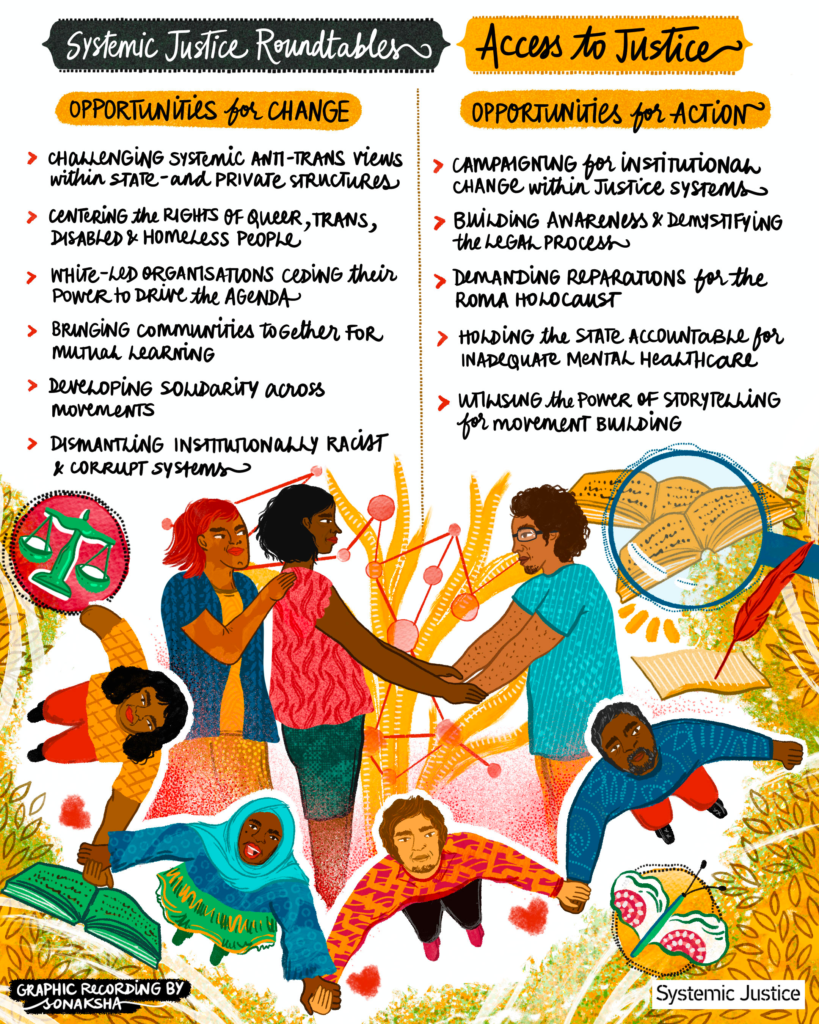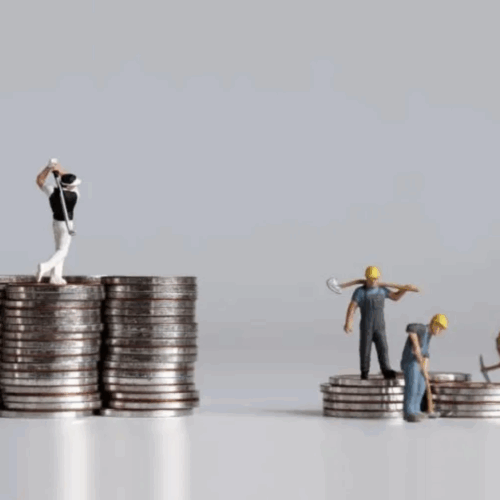You may think the word ‘litigation’ isn’t the most exciting one of the English language, and probably most litigators would nod in agreement. It’s also not the most accessible one. That’s understandable: while it can be an extremely powerful tool, litigation has been inaccessible and under-utilised, especially for those who need it most: movements working to address structural inequalities in society.
There’s a lot to unpack in “community-driven litigation”, and unwinding its silver linings is the backbone of our newly founded organisation, Systemic Justice. We are thrilled to be launching our first legal challenge in autumn 2022, but alongside the preparations for that case, we observed it was crucial to analyse how litigation entangles with community in six different areas: climate justice, access to justice, policing, social protection, anti-racism, and free movement.
As identifying priorities for litigation is an essential step in this work, the past few months have been dedicated to bringing together almost 100 organisations and movements in a series of roundtable conversations across these six themes. The events’ focus on grassroots is the ingredient that will allow us to better understand the challenges and blockages most affecting communities’ access to justice. As intersectionality is an indissociable aspect of oppression, it also occupies a central role in Systemic Justice’s approach, underpinning what community-driven litigation is all about: connecting personal and societal realms, digital and non-digital, to injustice.
We believe that meaningful access to justice is a key milestone to level up the equity bar in society, and our longstanding work in this field prompt us to conclude that marginalised communities are disproportionately affected by the systems built by and for the few. Systemic Justice’s main aim is precisely to help revert this trend: our core purpose is to ensure access to justice is levelled to allow communities to drive impactful, lasting change for important challenges they otherwise are not able to advocate for. It is this bold, clear motto that drives us and keeps us moving forward.
Zooming into the loophole of intersectional & systemic injustice, our organisation wants to scrutinise how a person’s characteristics or circumstances can compound harm, and how litigation can address these harms. But how does intersectionality come into play exactly? Take issues around social protection, where people with disabilities are discriminated because they require a societal safety net; or climate justice, where air pollution disproportionately affects communities of colour, as the case of 9-year-old Ella Adoo-Kissi-Debrah in the UK aptly demonstrates. It is the intersection of these segments of oppression that we have been exploring in our round-table sessions, and the collective process of enquiry brought by our exchanges is already showing its fruits as communities come up with concrete issues that will help us prepare for future legal challenges.
As policing bears an imprint of institutional racism, developing grassroots forms of police monitoring becomes paramount. Data from across Europe shows that racialised groups disproportionately suffer from police violence, profiling, and over-surveillance. Like the 1000 young black men removed from a ‘gangs’ database in the UK, who after a review found they posed little to no risk of committing crimes. They themselves were the victims of institutional racism and systemic discrimination. In Europe, racism is so deeply inherent in policing that we can only abolish racism by abolishing policing as we know it.
These intersections can also be found in systems of social protection, meaning, systems built around the provision of social security and social welfare. They too are tainted by discrimination, bias, and prejudice. Those who need this type of support are already marginalised in many European countries. Anybody can find themselves in a situation where they need social protection, yet those who access this support are too frequently treated with indignity and branded as “lazy” or “living off the state”. In some contexts, these dynamics translate into the term “welfare” being weaponised against racialised communities, people on the move, as well as those experiencing poverty or who have a disability.
Communities that already face discrimination, exploitation and oppression (such as being inappropriately arrested because of racial profiling or disproportionately suffering from health issues due to the impact of climate change in specific geographical areas) then experience aggravated harm within these systems that should be providing help and support. The result? People often become targets of oversurveillance, discrimination, oppression and exclusion in public decision-making that affects their lives.
As we explore each roundtable conversation on the pressing issues we shared above, we determine priorities to develop litigation projects together with our partners. Which brings us back to where we started: community-driven litigation. In an holistic and equitable manner, the course of each legal challenge will be tackled in joint action with the communities fighting the racial, social and economic injustices they are confronted with. The strategic element of this approach lies in working together to bring about a bigger change in law, policy or practice that can then benefit entire populations rather than just those taking up the case. An example of such amplification could be the overturning of a law that was facilitating racial profiling in policing, or forcing governments to take action to stop gas drilling, better control and shift waste management or tidy up devastated, polluted sites.
Litigation is more than just filing a court case. Communities already doing the work to challenge these injustices, and who has direct experience of the harms that flow from such injustices, should be at the very heart of the action, especially if a challenge goes to court. We’ll do the legal legwork so that communities can access meaningful justice on terms that work for them: we want to make the courts work for communities instead of against them. And we’re just getting started.
Find out more about work, stay updated by signing up to our newsletter, or follow us on Twitter or Instagram.




